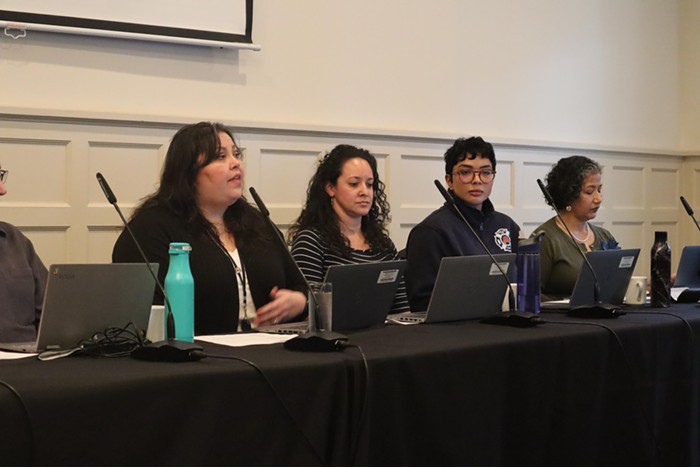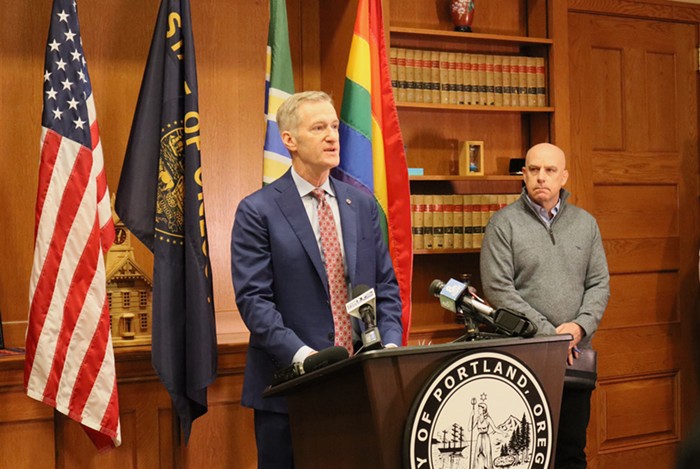WHEN MULTNOMAH county released an alarming number of prisoners last year, no one could quite figure out why.
In 2012, the county released 913 inmates via so-called "emergency releases" triggered by jail overcrowding. It logged 309 in the first five months of 2013 and, according to Sheriff Dan Staton, is on pace to eclipse last year's total. Compared with 82 releases in all of 2011, the rise baffled officials.
Six months later, a workgroup studying the problem is getting close to making recommendations for how Multnomah County might rethink who it's jailing.
"I think over the summer we'll surface some suggestions," said Scott Taylor, director of the Multnomah County Department of Community Justice and a member of the group.
Those recommendations, participants say, haven't been hammered out in full, but they'll almost certainly involve far more subtle policy changes than simply upping the capacity of county jails—a fix proposed by Staton in a May budget hearing.
"I alone am tasked with the operation of a constitutionally sound jail system, and I must not be over capacity," Staton told the county board of commissioners. "Current data indicates that if we did increase our capacity by one dorm, 59 beds, we would virtually eliminate emergency population releases [EPRs] in the current system."
That logic seems to make sense. Emergency releases are triggered when the county's two jails, currently approved to hold 1,310 inmates, reach 95 percent capacity.
But newly available data indicates emergency releases fluctuate independent of jail beds. A draft document obtained by the Mercury shows, in fact, that the number of emergency releases was far higher in 2004-2006, when hundreds more beds were at the county's disposal (there is room in the county's Inverness Jail to house additional inmates, but not funding to staff every dorm).
"You can chase your tail adding jail beds for a long time," says Multnomah County Commissioner Judy Shiprack, who co-chairs the emergency release workgroup. "If you don't figure out why the system is giving you more prisoners than you have capacity to maintain, you're not asking the right questions."
The right questions, or at least the ones the workgroup is asking, delve into every corner of the county's justice system—from what types of suspects can be released without bail, to whether low-level criminals guilty of probation violations need to take up space, to scrutiny of a three-year-old county policy that determines who is let go in an emergency situation.
They are incremental factors that, taken as a whole, could meaningfully reshape the makeup of the county's inmate population. And that, participants say, is the point.
"We have to know who's in there, are there the right kind of people in there," Taylor said at a recent meeting of the Multnomah County Local Public Safety Coordinating Council, a group made up of a wide swath of officials affiliated with the justice system, city and county government, and community organizations. "The more we look at those numbers, I think, that will give us conclusions."
The county has already toyed with some fixes. In April, Staton began releasing some of the undocumented immigrants the sheriff's office formerly held for US Immigrations and Customs Enforcement. That move won the county big cheers from immigrants rights groups, but has not meaningfully helped jail numbers, Shiprack says.
The sheriff's office has still been forced to release dozens of inmates each month—92 in February, 101 in March—using what some say are overly rigid criteria.
"The people who are actually being released on the EPR are not necessarily the ones you want released," says Suzanne Hayden, executive director of the nonprofit Citizens Crime Commission. "We need to realign how we determine, given the whole population that's in the jail, who should be released."
A timeline for possible changes hasn't been hammered out, but workgroup members the Mercury spoke with expressed optimism that recommendations might be around the corner. The group is slated to meet again as this paper hits news boxes on Wednesday, June 12.
"We don't know any easy switch that will get us out of this problem," Shiprack says. "I think that we are hot on the trail of some suspects."



















